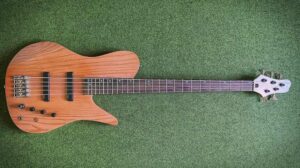How To Get Great Tone on Trombone

Every musician who is serious about making music seeks the “perfect tone,” but you may not know where to start if you’ve never had formal training. Here are some tips that apply to players of all levels. They can be helpful on any wind or brass instrument, but are especially necessary for “low brass” instruments such as the trombone – my favorite horn! – which demand deep, full breaths and sturdy embouchure.
Warm It Up
Before you play, warm up the horn and mouthpiece (literally). For the mouthpiece, holding it in your hand for a minute or two is usually enough (any woodwind players reading this, know those reeds require very different preparation). For the horn, place your lips loosely into the mouthpiece (you won’t be making any notes yet) and gently blow warm air through the horn.
This is crucial for maintaining good intonation as you play. Imagine tuning your horn cold, and then as you play (and it warms up) the pitch suddenly changes in the middle of a song! This is particularly important if you are playing in outside in cold weather, or in a cold air-conditioned room. It’s also helpful if you are about to play a concert and feel nervous. Taking slow, deep breaths and releasing slow warm air through the horn will help calm you down and slow that heart rate.
Slow and Steady Wins the Race
Practicing slow, long, sustained whole notes (commonly referred to as “long tones” in band) is the best way to improve your tone quality. Do this first, as a warm-up exercise, before playing anything else. Begin with your lowest note (low E in 7th position, or if you have a trigger, pedal Bb in 1st position) and ascend or climb up chromatically. Make sure each note starts clearly and well-defined (no glissando).
As you prepare to start the first note, take a deep, full breath with your diaphragm. As the muscle stretches to pull air into your lungs, you should feel it pushing down into your gut, forcing your stomach out (don’t be shy!). You should also feel movement into the back or spine (not painful). You should not see a lot of chest movement. If you are breathing with your chest, you are not taking full breaths.
Dynamics Are Your Friend
Begin with a clear and precise tone, as soft as you can – pianissimo or pp – and gradually increase volume. You don’t need a strong attack, but the note should be deliberate. Don’t just blow slow air and increase speed until a note appears. Use a gentle “Da” tonguing and work on your pianissimo volume until you have total control over this dynamic level. You should be able to consistently produce a centered (in tune) note at every dynamic level. Again, working on this slowly is the best way to warm-up and find that good tone. Increase your volume gradually (crescendo) until you reach maximum volume (fortissimo), then gradually decrescendo until you return to pianissimo. Make sure you stay in tune the whole time; there will be a natural tendency to go sharp during the crescendo and flat in the decrescendo.
Don’t Force It
This is a warm up exercise. Use your judgement, don’t overdo it. If you are climbing up that chromatic scale and reach the top of your range, go ahead and aim for one or two notes higher but never play tired. Rest frequently during practice. Don’t press the mouthpiece too tightly against your lips, either. You may find yourself doing this and not even realize it. I know some professional players who are guilty of this! Again, your goal is to have control and be consistent. You should be relaxed, calm, cool and rested.
Younger players (either in age or experience) may feel awkward about using their lips to make music. The metal can sometimes feel strange, especially if it’s cold. As mentioned previously, you should warm up the mouthpiece before you play. Another thing I like to do is play with wet lips. I also use more upper lip than bottom lip, inside the cup of the mouthpiece. But some players get good results doing the opposite. Bottom line, if you are producing great tone that is full and round, it really doesn’t matter how, as long as you are consistent and can reach the full range of the instrument comfortably.
———
Article by:
 Nick Edelstein is an accomplished multi-instrumentalist based in Atlanta. He’s been teaching Lessons In Your Home students since 2005 on piano, guitar, trombone, trumpet, bass guitar, mandolin, ukulele, accordion, organ and more. Nick is a member of The Recording Academy and performs regularly around the Southeast with various artists including his band Nick and The Grooves™. He is also the executive director of Judaic Mosaic, a songwriting & recording camp for Jewish teens.
Nick Edelstein is an accomplished multi-instrumentalist based in Atlanta. He’s been teaching Lessons In Your Home students since 2005 on piano, guitar, trombone, trumpet, bass guitar, mandolin, ukulele, accordion, organ and more. Nick is a member of The Recording Academy and performs regularly around the Southeast with various artists including his band Nick and The Grooves™. He is also the executive director of Judaic Mosaic, a songwriting & recording camp for Jewish teens.